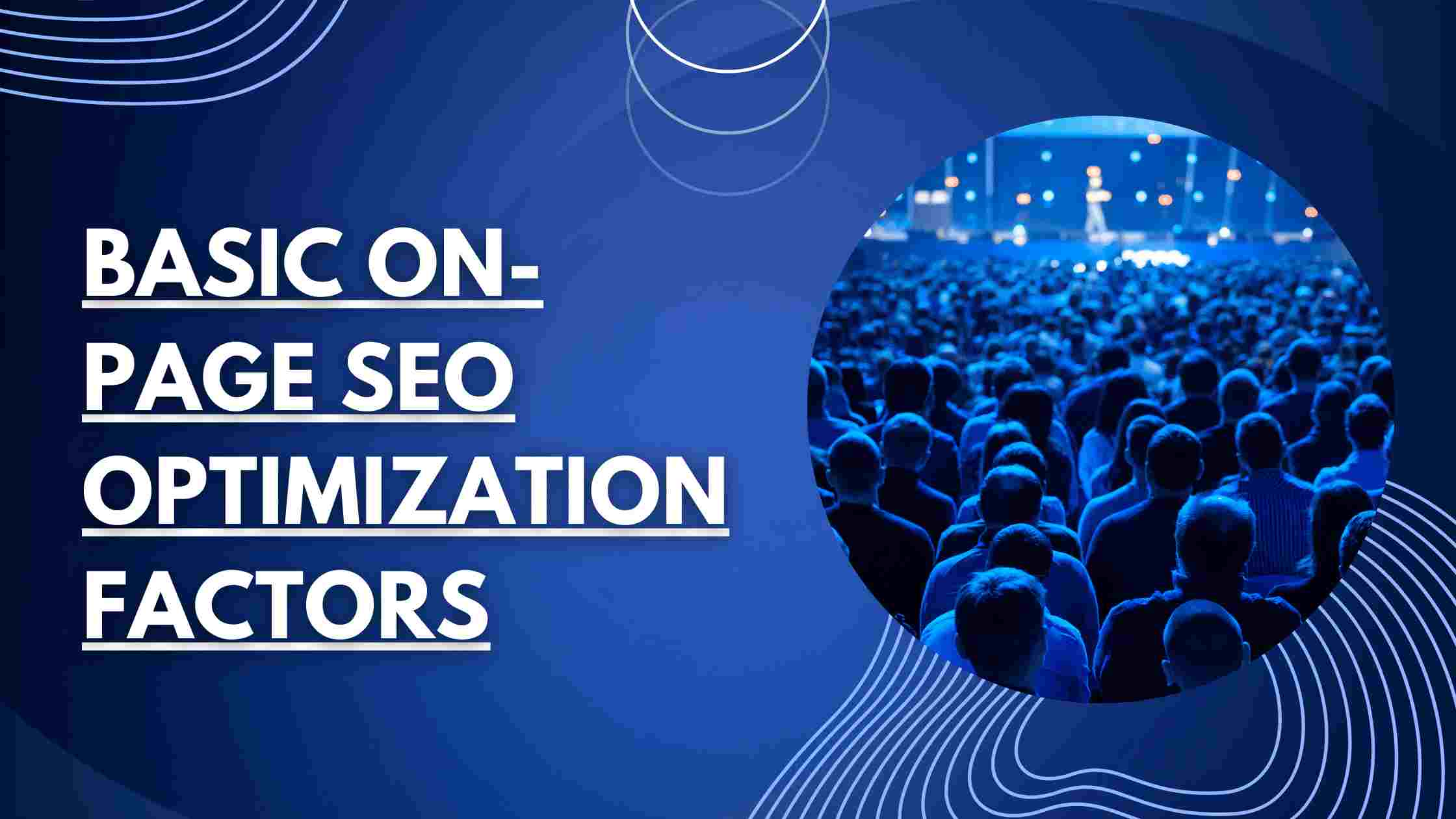
Basic On-Page SEO Optimization Factors: Boosting Your Website’s Visibility
Introduction: In the world of digital marketing, search engine optimization (SEO) plays a pivotal role in improving a website’s visibility and driving organic traffic. While off-page optimization strategies are essential, on-page optimization factors have a significant impact on search engine rankings. In this blog, we will explore the fundamental on-page optimization factors that can help you enhance your website’s SEO performance and attract more visitors.
- Keyword Research and Targeting: Keyword research forms the foundation of on-page optimization. Identify relevant keywords and phrases that your target audience is likely to search for. Tools like Google Keyword Planner or SEMrush can assist you in finding high-volume and low-competition keywords. Once you have your keywords, strategically incorporate them into your website’s content, meta tags, headings, and URLs. However, be cautious not to overuse keywords, as it can harm your rankings.
- Quality Content Creation: Content is king when it comes to on-page optimization. Develop high-quality, informative, and engaging content that aligns with your target audience’s interests and search intent. Incorporate your target keywords naturally within the content, while ensuring it reads smoothly for human visitors. Use descriptive headings (H1, H2, etc.) to structure your content, making it easier for search engines to understand and index.
- Title Tags and Meta Descriptions: Title tags and meta descriptions are essential on-page elements that impact click-through rates from search engine results pages (SERPs). Craft compelling and concise title tags (maximum 70 characters) that accurately reflect the content of the page and include your primary keyword. Similarly, write compelling meta descriptions (maximum 160 characters) that entice users to click on your link by providing a concise summary of the page’s content.
- URL Structure and Optimization: Creating search engine-friendly URLs is crucial for on-page optimization. Keep your URLs short, descriptive, and keyword-rich. Avoid using generic URLs with numbers or random strings of characters. Instead, structure your URLs to reflect the content hierarchy and include relevant keywords. For example, www.yourwebsite.com/blog/seo-on-page-optimization. Use hyphens to separate words for improved readability and search engine understanding.
- Image Optimization: Optimizing images on your website can improve both user experience and search engine rankings. Compress your images to reduce file size without compromising quality, as large images can slow down page load times. Use descriptive file names that include relevant keywords before uploading images. Add alt tags that provide a concise description of the image, including relevant keywords, as search engines rely on alt tags to understand the image’s content.
- Internal Linking: Internal linking is an effective on-page optimization technique that helps search engines discover and index your website’s pages. Interlink relevant pages within your website using keyword-rich anchor text. This not only helps users navigate your site but also spreads link equity throughout your website, boosting the ranking potential of linked pages. Ensure your internal links are natural, relevant, and add value to the user experience.
- Mobile-Friendly Design: With the rise of mobile usage, having a mobile-friendly website is no longer optional. Ensure your website is responsive and optimized for mobile devices. Mobile-friendly websites not only provide a better user experience but also receive a ranking boost in mobile search results. Test your website’s mobile-friendliness using Google’s Mobile-Friendly Test and address any issues or usability concerns that arise.
- Page Speed Optimization: Page speed is a critical factor for both user experience and search engine rankings. A slow-loading website can lead to higher bounce rates and lower search engine rankings. Optimize your website’s page speed by minimizing HTTP requests, enabling browser caching, compressing files, and optimizing images.


